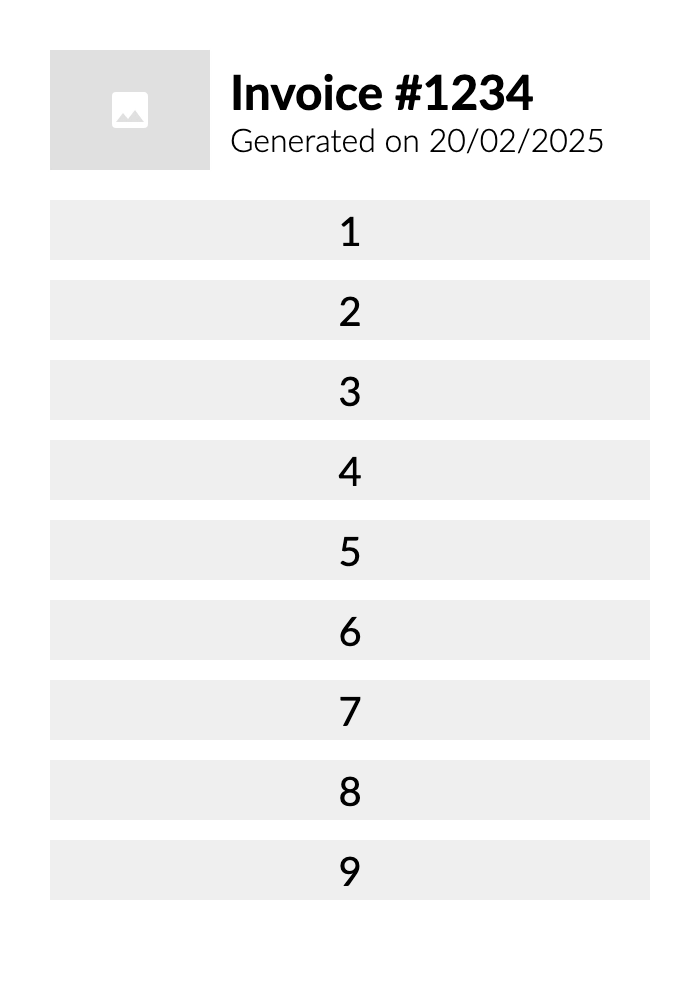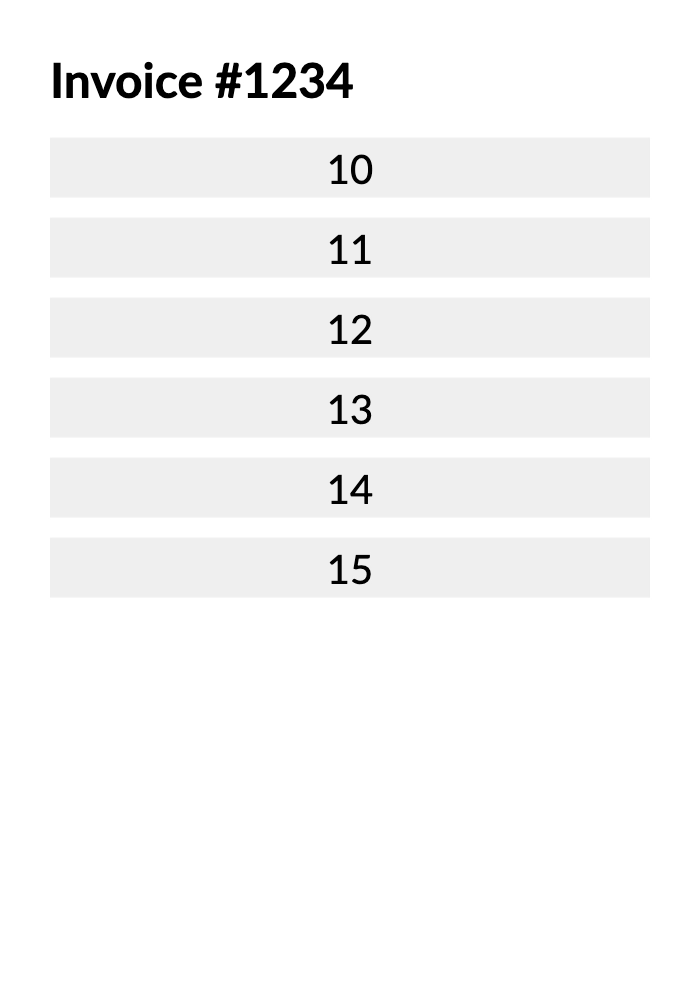Appearance
Show once
The ShowOnce element provides fine-grained control over content rendering across multiple pages.
By default, all elements are fully rendered once and do not repeat. However, in specific contexts such as headers, footers, or decorative elements positioned before and after content slots, elements may be repeated on every page. To prevent this automatic repetition, use the ShowOnce element.
TIP
Combine this element with SkipOnce to achieve more complex behaviors, e.g.:
container.SkipOnce().ShowOnce()ensures the child element is displayed only on the second page.container.SkipOnce().SkipOnce()starts displaying the child element from the third page onwards.container.ShowOnce().SkipOnce()draws nothing, as the order of invocation is important.
Example
The following example demonstrates how to use ShowOnce to create a professional invoice header that shows different content on the first page compared to subsequent pages:
csharp
container
.Decoration(decoration =>
{
decoration.Before().Column(column =>
{
column.Item()
.ShowOnce()
.Row(row =>
{
row.ConstantItem(80).AspectRatio(4 / 3f).Placeholder();
row.ConstantItem(10);
row.RelativeItem()
.AlignMiddle()
.Column(innerColumn =>
{
innerColumn.Item().Text("Invoice #1234").FontSize(24).Bold();
innerColumn.Item().Text($"Generated on {DateTime.Now:d}").FontSize(16).Light();
});
});
column.Item()
.SkipOnce()
.Text("Invoice #1234").FontSize(24).Bold();
});
// generate dummy content
decoration.Content()
.PaddingTop(15)
.ExtendHorizontal()
.Column(column =>
{
column.Spacing(10);
foreach (var i in Enumerable.Range(1, 15))
{
column.Item()
.Height(30)
.Background(Colors.Grey.Lighten3)
.AlignCenter()
.AlignMiddle()
.Text($"{i}");
}
});
});
